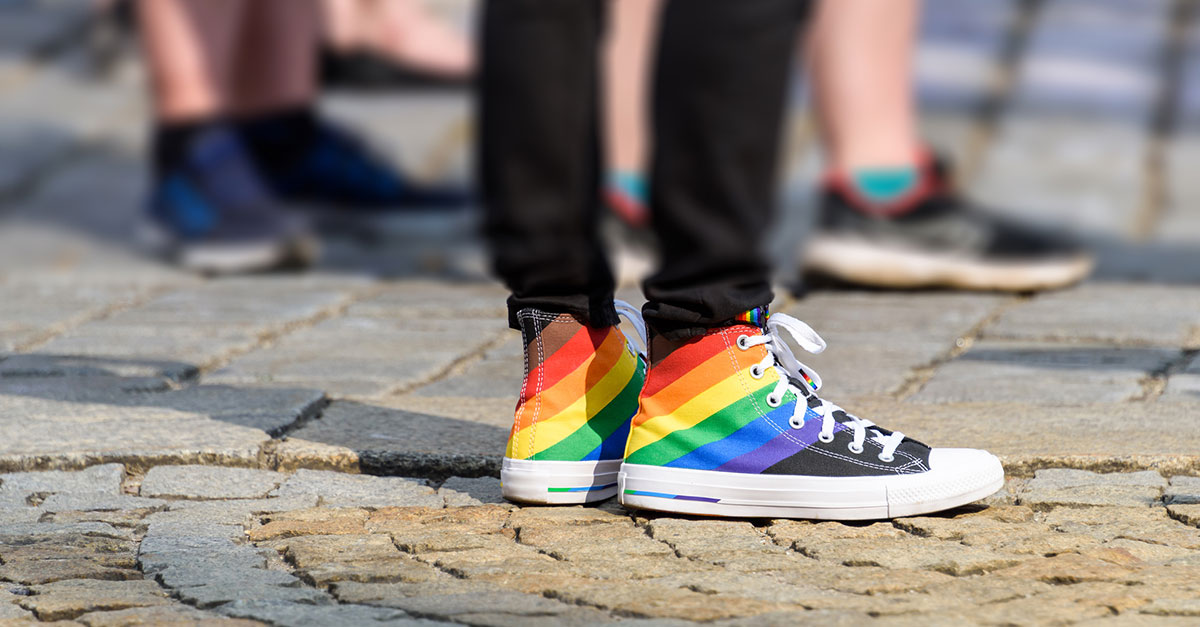As June Pride month hits mid-point, rainbow designs are everywhere as brands attempt to demonstrate their support for the LGBTQIA+ community. The rainbow designs are seen on company logos, social media pages, advertising, apparel, food packaging, promotional items, make-up palettes and everything in between. Anyone who works in a creative design environment can’t help but notice the cool, fun, and interesting designs. However, after exploring Pride marketing further, there is a lot more to consider.
Deciding to promote Pride month and incorporate it into your marketing strategy should be a decision that is not entered into lightly. If not given careful consideration and executed correctly, you may actually do more harm than good to the LGBTQIA+ community and your brand’s reputation.
You may be asking yourself, how can this be? Pride-themed marketing is catching people’s attention and creating awareness for the cause, right? Maybe, but the real question is whether or not a brand is following through on their show of support for the LGBTQIA+ community and taking further action to create meaningful results. If not, they may be rainbow-washing.
The term rainbow-washing refers to “The act of using or adding rainbow colors and or imagery to advertising, apparel, accessories…in order to indicate progressive support for LGBTQIA+ equality (and earn customer credibility) – but with a minimum of effort or pragmatic result.” One writer summed it up well when she explained it as a form performative activism, or supporting a cause or issue to garner attention, support or monetization from others rather than actually caring about making a difference in the cause.
Rainbow-washing is harmful to the LGBTQIA+ community and bad for business.
In addition to the obvious reasons, rainbow-washing (especially by large corporations) also has the following negative effects on the LGBTQIA+ community:
- Cheapening the meaning and diminishing the history of Pride. Pride started as a way to commemorate the Stonewall Riots in June of 1969 in response to police brutality toward LGBT people. It now celebrates the achievements of the LGBTQIA+ community, but also recognizes the struggles the community still faces.
- Deflecting attention away from company practices that negatively impact LGBTQIA+ issues. The primary example of this is when the same companies that outwardly promote support for the LGBTQIA+ community make large donations to politicians who were involved in creating or voting for legislation that hurts this community.
Some companies fail to understand that rainbow-washing can also do damage to their brand. Consumer expectations of brands are higher than ever. They expect companies to be socially conscious and take a stand on issues. They like to do business with companies that align with their values. This is especially true of younger generations, Gen Z in particular (the new power segment for marketers). They are more diverse and educated than previous generations. When it comes to social issues, they are social activists who are ready for change. They expect brands to be transparent, ethical, and socially responsible. Brands that do this will be rewarded with loyalty. But, this group is also shrewd, super connected and values authenticity. If you lose their trust, you lose their business.
Tips for successful Pride marketing
Perhaps your company has already embarked on a Pride marketing campaign or is thinking about doing so in the future. Either way, it is not too late or too early to take steps that will ensure your approach is positive and your support is backed up by your actions. Marketing Profs and Fast Company offer up these tips:
- Conduct research
All good marketing campaigns rely on research to understand your target market. For Pride campaigns, it is important to understand the LGBTQIA+ history, rights and current issues. This is especially true for global companies where issues and rights will differ by country. - Avoid stereotyping
Include people from the community in your Pride campaigns. Focus on LGBTQIA+ people and actual life experiences. Include them in advertisements year round to normalize the community rather than only featuring them one month out of the year.
In my opinion, even the best intentions can go astray without proper vetting. Including people from the LGBTQIA+ community also means including these professionals in the creative development and review process. The last thing you want your message to do is insult or confuse people. And, for goodness sake, compensate these professionals fairly. Writer Sarah Stiefvater reports that many companies underpay or expect free labor for their Pride content from queer creators. - Follow through
Demonstrate your support with your actions. Donate Pride profits to LGBTQIA+ organizations. Use your platform to raise awareness and support. Partner with organizations like the Trevor Project to do meaningful year-round work in the community. Be transparent about your actions and reporting of your donations.
Pride marketing should not just be for the month of June. Make it an ongoing commitment. Have LGBTQIA+ members in leadership positions and feature them in advertising and social media year round.
Here are some examples of companies that are backing up their symbolism with their actions.
And here are some examples of impactful Pride campaigns.
The next time you see a clever rainbow themed logo, ad or package design, think beyond the visual aspects and consider what the brand is actually doing for the cause.
Sources
https://www.purewow.com/wellness/rainbow-washing
https://www.marketingprofs.com/articles/2022/47337/how-to-create-a-successful-pride-campaign
https://www.fastcompany.com/90759471/brands-need-more-than-rainbow-colored-products-if-they-want-to-celebrate-pride-in-2022
https://the-ard.com/2022/05/24/stop-rainbow-washing-anti-racism-daily/
https://www.franchisetimes.com/franchise_news/what-franchise-brands-can-do-for-pride-instead-of-rainbow-washing/article_a7fc9944-ece8-11ec-8a04-cf0a0b5236b4.html
![cat[&]tonic](https://cat-tonic.com/wp-content/uploads/candt_logo-rw.png)




